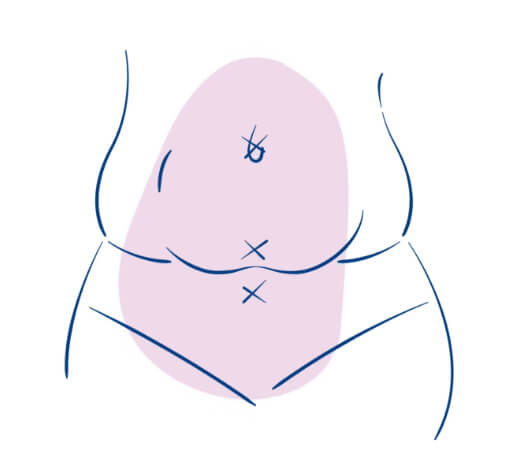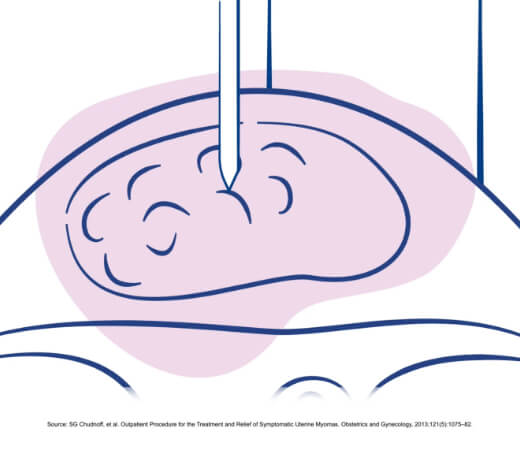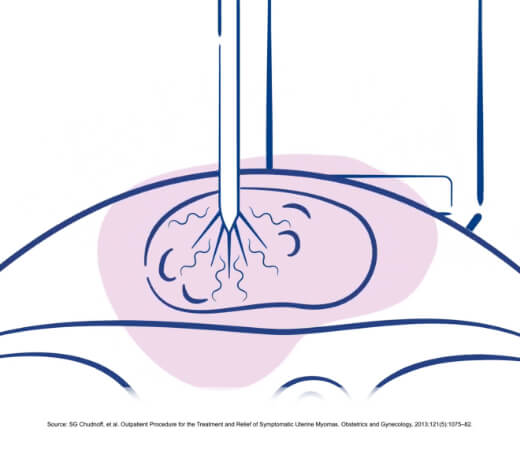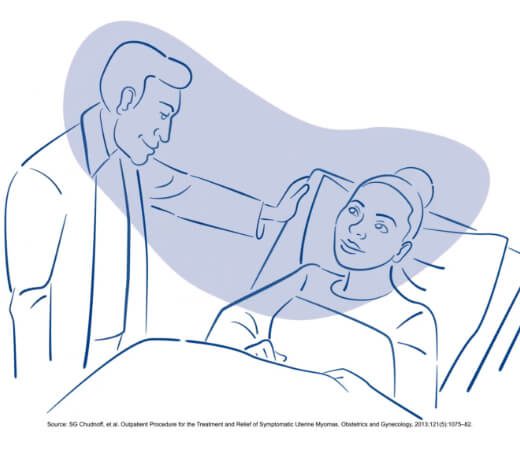A Targeted Solution for Fibroids

6 Steps to Fibroid Freedom

You’ll be brought into the operating room for anesthesia

After you’re asleep, your physician will make a minimum of three small incisions for a camera, ultrasound, and Acessa handpiece

Your physician uses a special ultrasound directly on the uterus that allows them to find and ultimately treat more fibroids than other standard imaging methods

Next your physician deploys the tip of the Acessa handpiece into the fibroid and only the fibroid

Controlled heat will destroy fibroid tissue. The heat shrinks the tissue mass into a fibroid into a soft mass that is absorbed by the body over time. Your physician will repeat this process until every targeted fibroid is treated

After surgery, most patients get cleared to go home the same day, and return to work in 4-5 days.3 Most women experience relief in the first 3 months, and continual improvement for 12 months3
See It in Action
Is the 
Procedure Right for Me?
If you’re not planning to have children in the future, the Acessa procedure might be a good option for you. And since it’s not major surgery, you can get back to life faster.
- Most patients get cleared to go home the same day.
- Women are usually ready to return to work after 4-5 days.3
What You Can Expect
98%
94%

See What People Are Saying
As with any medical procedure, there are potential risks to consider and discuss with your doctor when making your treatment decision.
Let’s Keep in Touch
Important Safety Information
The Acessa ProVu system is intended to identify and shrink symptomatic uterine fibroids. The Acessa ProVu system is used by trained physicians during laparoscopic surgery under general anesthesia. Rare but serious risks of this procedure include, but are not limited to, infection, internal injury, blood loss and complications related to laparoscopic surgery and/or general anesthesia. This procedure is not recommended for women who are planning future pregnancy. This information is not medical advice. Please discuss the risks and benefits with your doctor to find out if the Acessa procedure may be right for you.
- Leppert PC, Jayes FL, Segars JH. The extracellular matrix contributes to mechanotransduction in uterine fibroids. Obstet Gynecol Int. 2014;2014:783289.
- Lee BB, Yu SP. Radio frequency ablation of uterine fibroids: a review. Curr Obstet Gynecol Rep. 2016;5(4):318-324.
- Chudnoff SG, Berman JM, Levine DJ, Harris M, Guido RS, Banks E. Outpatient procedure for the treatment and relief of symptomatic uterine myomas. Obstet Gynecol. 2013;121(5):1075-1082.
- Lin L, Ma H, Wang J, et al. Quality of life, adverse events, and reintervention outcomes after radio frequency ablation for symptomatic uterine fibroids: a meta-analysis. J Minim Invasive Gynecol. 2019;26(3):409-416.
- Havryliuk Y, Setton R, Carlow JJ, Shaktman BD. Management of symptomatic fibroids: review and meta-analysis of the literature. JSLS. 2017;21(3):e2017.00041.
- Berman JM, Guido RS, Leal JGG, et al. Three-years outcome from the Halt trial: a prospective analysis of radio frequency volumetric thermal ablation of myomas. J Minim Invasive Gynecol. 2014;21(5):767-774.
- Krämer B, Hahn M, Taran FA, Kraemer D, Isaacson KB, Brucker SY. Interim analysis of a randomized controlled trial comparing laparoscopic radio frequency volumetric thermal ablation of uterine fibroids with laparoscopic myomectomy. Int J Gynaecol Obstet. 2016;133(2)206-211.
